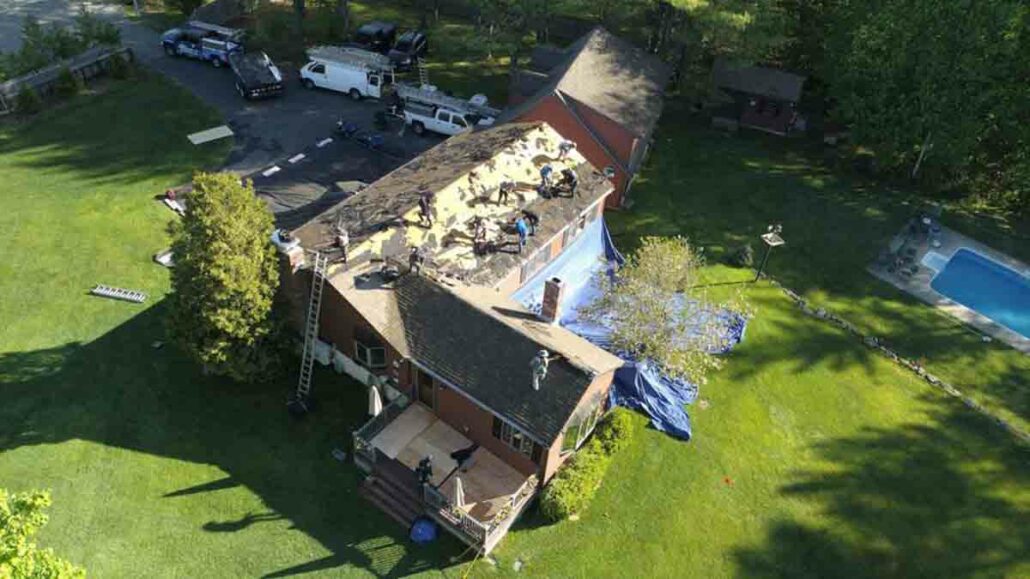Replacement cost coverage is a crucial component of home insurance policies. It refers to the amount of money your insurer will provide to rebuild or replace your home and its contents in the event of a covered loss, such as a fire or theft. Unlike actual cash value coverage, which considers depreciation, replacement cost coverage aims to restore you to your pre-loss financial position by covering the full cost of rebuilding or replacing damaged property without deducting for wear and tear.

While replacement cost coverage often offers better protection, it typically comes with a higher premium compared to actual cash value coverage. Therefore, it’s essential to carefully consider your financial situation and the potential risks to your home when choosing between these two options.
What is Replacement Cost Coverage?
Replacement cost coverage is a type of home insurance policy that reimburses you for the full cost of repairing or replacing your damaged property without deducting for depreciation. This means if your home is destroyed by a fire, your insurance company will cover the cost to rebuild it entirely, even if building costs have increased since you purchased the home.
How Does Replacement Cost Coverage Differ from Actual Cash Value (ACV)?
Actual Cash Value (ACV)
This type of coverage pays you the replacement cost of your property minus depreciation. For example, if your 10-year-old roof is damaged, the ACV will consider its age and condition before determining the payout.
Replacement Cost Coverage
This coverage pays the full cost of replacing the damaged property with a new one, regardless of its age or condition.
Why is Replacement Cost Coverage Important?
- Protects Against Inflation: Building costs and material prices fluctuate over time. Replacement cost coverage ensures you have the funds to rebuild or replace your property without financial strain.
- Peace of Mind: Knowing you’re fully covered in case of a disaster can provide significant relief.
- Potential for Higher Premiums: While replacement cost coverage offers better protection, it typically comes with a higher premium compared to ACV coverage.
Factors Affecting Replacement Cost
Several factors influence the replacement cost of your home:
- Location: Geographic location impacts building costs due to factors like labor, materials, and natural disaster risks.
- Size and Age of Your Home: Larger homes and older homes generally have higher replacement costs.
- Construction Materials: The type of materials used in your home’s construction significantly impacts the cost of rebuilding.
- Local Building Codes and Regulations: Compliance with current building codes can increase construction costs.
Determining the Right Replacement Cost Coverage
To ensure adequate coverage, it’s crucial to accurately estimate your home’s replacement cost. Consider the following steps:
- Professional Appraisal: Hire a professional appraiser to determine your home’s replacement cost.
- Building Cost Index: Use online tools and resources to estimate building costs in your area.
- Home Inventory: Create a detailed inventory of your belongings to assess personal property coverage needs.
- Insurance Agent Consultation: Discuss your options and coverage needs with a knowledgeable insurance agent.
Additional Considerations
- Extended Replacement Cost Coverage: This optional coverage provides additional protection by increasing your dwelling coverage limits by a specific percentage.
- Guaranteed Replacement Cost: Some insurers offer guaranteed replacement cost coverage, promising to rebuild your home regardless of the cost.
- Cost vs. Coverage: Carefully weigh the benefits of replacement cost coverage against the potential increase in premiums.
By understanding replacement cost coverage and taking the necessary steps to determine the right amount, you can protect your home and belongings from unexpected losses.
Frequently Asked Questions (FAQs)
Is replacement cost coverage standard in all home insurance policies?
While many policies include replacement cost coverage for the dwelling, it’s essential to verify this with your insurance provider. Personal belongings are often covered under actual cash value unless you specifically purchase replacement cost coverage for them.
How often should I review my replacement cost coverage?
It’s recommended to review your coverage annually to account for changes in construction costs and the value of your home.
What if I make improvements to my home?
It’s crucial to inform your insurance company about any significant home improvements, as this may affect your replacement cost coverage.
Can I choose between replacement cost and actual cash value coverage?
In many cases, you can choose the type of coverage for your personal belongings, but replacement cost coverage for the dwelling is often standard.
Will my insurance cover the cost of temporary living expenses after a loss?
Many home insurance policies include coverage for additional living expenses, which can help with temporary housing costs while your home is being repaired.
Conclusion
Replacement cost coverage is essential for protecting your home and belongings from financial loss due to unforeseen events. By understanding how it works, considering factors that affect replacement cost, and taking proactive steps, you can ensure your insurance policy adequately safeguards your investment.

